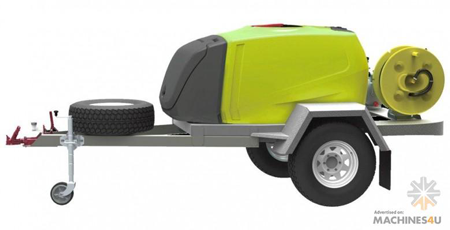A fire pump system, which delivers large amounts of water in a case of a fire is usually portable what makes it highly functional and easily and quickly accessible. For increased safety, fire fighting pumps are recommended for every home. Of course, homeowners first need to learn how to operate one. A typical fire fighting system consists of the following components:
Fire Fighting Pump
The main element of the fire fighting system is the fire fighting pump. Fire fighting pumps are designed for fire fighting applications only and not for dewatering or as trash pumps according to numerous beliefs. Usually, the fire fighting pumps are light in terms of weight so they can easily be carried and transported by one person. The fire fighting pumps have various applications depending on a problem.

Fire Fighting Pumps for sale @ Machines4u
Fire Hose
The fire hose delivers water from the pump directly to the fire. Its typical size ranges from 19 mm to 102 mm, but larger sizes can be custom made by numerous fire fighting pumps manufacturers and suppliers. The most commonly used size is 38 mm. This fire hose is made of a synthetic fabric, which is light yet strong, it is resistant to abrasion and odes not require drying after every use. It provides a lot of water and can be operated by one person. Fire hoses are divided into two categories: weeping and non-weeping. Weeping fire hoses become damp on the exterior when passing the water. This extra moisture protects them from heat and serves as a lubricant when dragging hoses on the ground. The non-weeping hoses on the other hand, remain dry on the exterior.
Suction Hose
This hose connects the water supply with fire fighting pumps which is why it must be of a rigid structure in order to prevent collapsing from the suction generated by the pump. The length of the suction hose should be as short as possible (25 to 40 centimeters), but long enough to connect the pump and extend into a water supply. To prevent the suction hose from being damaged, properly store it and maintain.
Foot Valve
The foot valve attaches to the end of the suction hose that extends into the water supply. The foot valve prevents foreign objects and debris from getting into the system and helps maintain the water flow in fire fighting pumps. The foot valve also prevents water from leaving the pump and returning to the water source.
Nozzle
Nozzle, the end of the fire hose can either be stream (no adjustment, the water exits in a fixed steam) or fog/stream (adjustable from stream to spray to off). Stream nozzles are suggested for penetration through a burning surface into the lower layers of a fire and they are most effective when trying to put out the fire. Fog nozzles are perfect for bush and grass fires. They are easily adjustable adapting to the fire and circumstance.
















